Hi guys,I have troubles moddeling a vertical support with cables. when I chargue the structure with seismic loads Ex (horizontal), Ez (vertical)
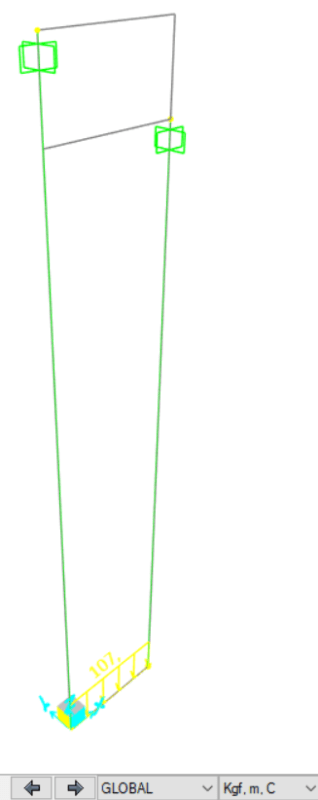
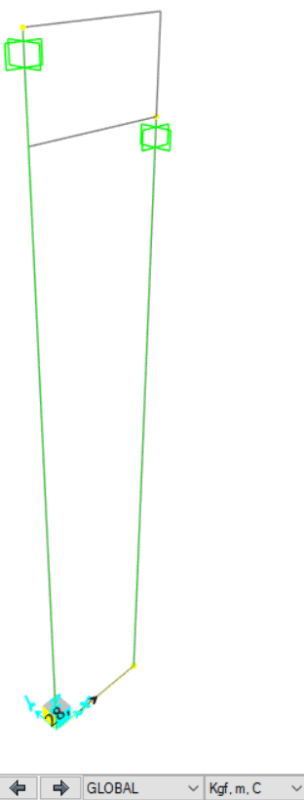
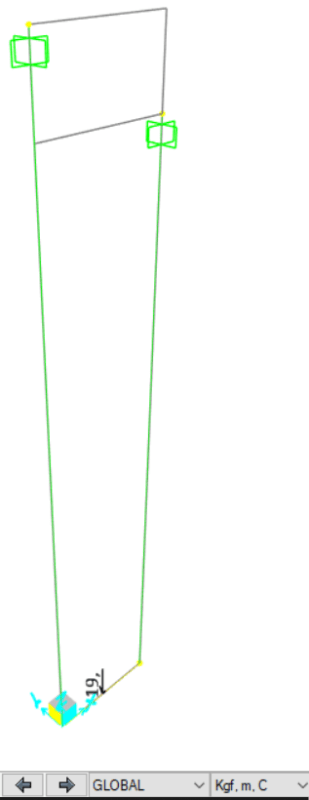
the program gives me various modeling warnings, and show me large displacement in the nodes.
How could you avoid being alert?
Operation : RUNNING ANALYSIS
Load Case : Solving Linear Stiffness from Zero (unstressed) initial conditions
THE STRUCTURE IS UNSTABLE OR ILL-CONDITIONED !!. CHECK THE STRUCTURE CAREFULLY FOR. TO OBTAIN FURTHER INFORMATION:. - USE THE STANDARD SOLVER, OR. - RUN AN EIGEN ANALYSIS USING AUTO FREQUENCY SHIFTING (WITH. ADDITIONAL MASS IF NEEDED) AND INVESTIGATE THE MODE SHAPES
*** Informational Message 1 ***
Date & Time : 27-12-2022 14:16:11
Run Tag : 0
Run Serial : 1
Operation : RUNNING CASES IN SERIES
Load Case : N/A
TOTAL TIME FOR THIS ANALYSIS: 00:00:00
*** Informational Message 2 ***
Date & Time : 27-12-2022 14:16:13
Run Tag : 0
Run Serial : 1
Operation : DELETING CASE RESULTS
Load Case : EX
RESULTS DELETED.
*** Informational Message 3 ***
Date & Time : 27-12-2022 14:16:13
Run Tag : 0
Run Serial : 2
Operation : RUNNING CASES IN SERIES
Load Case : N/A
TOTAL TIME FOR THIS ANALYSIS: 00:00:00
Thanks in advanced



the program gives me various modeling warnings, and show me large displacement in the nodes.
How could you avoid being alert?
Operation : RUNNING ANALYSIS
Load Case : Solving Linear Stiffness from Zero (unstressed) initial conditions
THE STRUCTURE IS UNSTABLE OR ILL-CONDITIONED !!. CHECK THE STRUCTURE CAREFULLY FOR. TO OBTAIN FURTHER INFORMATION:. - USE THE STANDARD SOLVER, OR. - RUN AN EIGEN ANALYSIS USING AUTO FREQUENCY SHIFTING (WITH. ADDITIONAL MASS IF NEEDED) AND INVESTIGATE THE MODE SHAPES
*** Informational Message 1 ***
Date & Time : 27-12-2022 14:16:11
Run Tag : 0
Run Serial : 1
Operation : RUNNING CASES IN SERIES
Load Case : N/A
TOTAL TIME FOR THIS ANALYSIS: 00:00:00
*** Informational Message 2 ***
Date & Time : 27-12-2022 14:16:13
Run Tag : 0
Run Serial : 1
Operation : DELETING CASE RESULTS
Load Case : EX
RESULTS DELETED.
*** Informational Message 3 ***
Date & Time : 27-12-2022 14:16:13
Run Tag : 0
Run Serial : 2
Operation : RUNNING CASES IN SERIES
Load Case : N/A
TOTAL TIME FOR THIS ANALYSIS: 00:00:00
Thanks in advanced

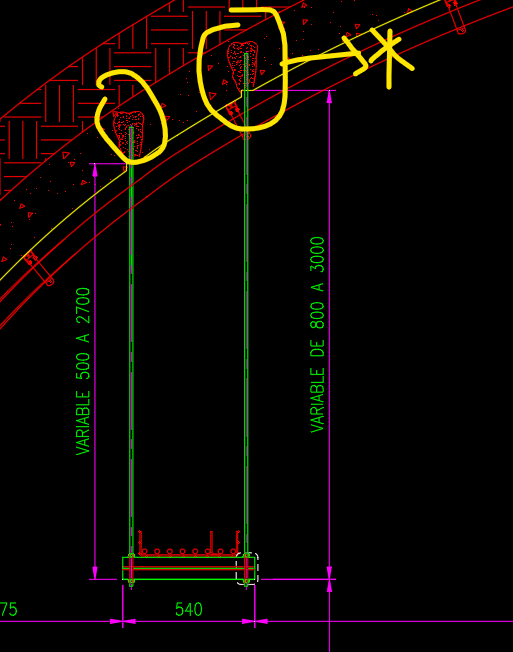
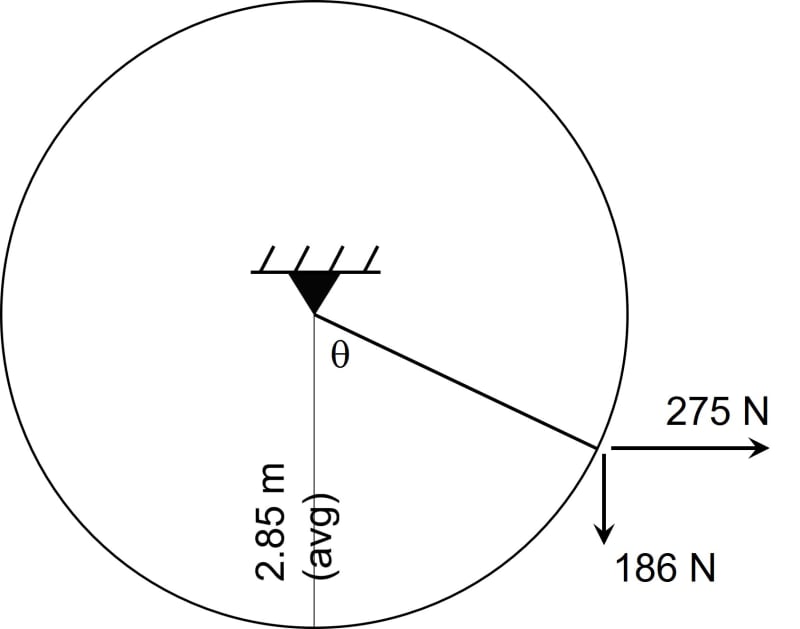
![[smile] [smile] [smile]](/data/assets/smilies/smile.gif) .
.